#I just… in what version of reality is colonization no longer a problem and may I live there???
Explore tagged Tumblr posts
Text
God, my social problems class is gonna be ROUGH.
#I just… in what version of reality is colonization no longer a problem and may I live there???#I dunno my professors is a white boomer so this is gonna be ✨fun✨#it’s required i have to get through this class for my major. I’m gonna need to learn to#kinda shut down and not react / think just give the answer she want and shut up#failed that today will try again on Tuesday when I have time to prep for it#edit: and like even if we hyper focused on the USA here a sec#um… did Puerto Rico obtain the right to vote in the last 24 hours or…??? 💀
0 notes
Text
Axiom Verge 2: Here We Go Again
So Axiom Verge 2 came out not long ago, but I don’t have a Switch and I don’t trust the Epic Games Store. Rather than wait and possibly get spoiled, I bit the bullet and watched a Let’s Play.
Consequently I can now build on this post. Cutting for length and spoilers right about here.
The Filter: The biggest revelation that AV2 provides is a refinement of the multiverse theory, plus defining some terms from the original game. Trace’s note next to his wheelchair mentions going upstream to the Filter or beyond for answers. As it happens, “upstream” refers literally to the Worldstream, and different universes are connected to each other in a serial fashion. The terminology used to describe the connections is upstream and downstream, with upstream leading towards the Source Worlds that are the progenitors of all other universes. Likewise, the Filter refers to worlds in the worldstream that function as firewalls and safety mechanisms to keep disruptive influences from downstream worlds from traveling too far up, since disrupting one world can damage all of the worlds downstream from that world.
We even get to see the Worldstream or some analog to it when Indra (the protagonist of Axiom Verge 2) travels to the Filter world upstream of Kiengir (which is either upstream of or parallel to Earth) and the background of the rooms is a MASSIVE fractal pattern originating from / coalescing into a singularity off in the distance.
There are also some notes from Trace to Dr. Hammond, his research partner in the cutscene for the first game who took Trace’s revolutionary theory and turned into a way to make Faster Than Light communication and computing technology. Dr. Hammond also finds herself in a unique position to test one of the possibilities implicit in Trace’s theory, namely if the existence of an afterlife is somehow accounted for in the multiverse. One of the notes in the first game says that different instances of a person across the multiverse can survive events that their counterparts do not, but that the survivors have no idea that they even have a counterpart who died.
What happens in the second game is more about what happens to the ones that didn’t make it, because Dr. Hammond is communicating with Indra through the prototype superluminal communicators (called ansibles) scattered here and there, but Indra can also find Hammond’s body and a suicide note in some of Kiengir’s ruins. Dr. Hammond refers to where she is as a sort of “detention center” that she needs Indra’s help to escape from, and this help involves hacking the control computer in the Filter world. An earlier message at an ansible mentions data throttling, which seems to refer to the memory limitations of the ansible prototypes themselves; they can only send so much data over their operational lifetimes.
Except there’s Trace’s original paper and the axioms he starts with, where reality is described as algorithms running a universal / multiversal simulation, and cognition is a sub-algorithm within the parent algorithm. Put it all together and the game all but states that there is an afterlife, but it operates on the same rules as life - it’s an adjacent or related universe to our own and minds / spirits / souls / cognitive algorithms can migrate between those universes under certain conditions even if the material body they used to pilot is no longer functional. At least, that’s what normally happens, but for some reason the transmigration of souls was limited or stopped or throttled. It’s semi-implied but never explicitly stated that there’s a trans-universal system in place to keep the Worldstream stable, and the Lamassu computer network that controls Kiengir is part of that network, and the fact that realities are starting to glitch and break down further implies that this system is damaged or overwhelmed.
Trace’s Motivations: Trace never shows up in the game, and only gets mentioned here and there in a few notes. The game takes place in the 2050s and Trace’s lab accident was in 2005, with Dr. Hammond starting Hammond Corp and making money hand over fist in 2007 by selling the world zero-latency computing technology. Hammond’s suicide note explains that Trace was already exploring the Breach before she started her company, but she hasn’t heard from him in decades and the entire antarctic expedition was just so she could try to find him again. She mentions a few things in passing that come up in the first game, like a device called a Scry that can locate anything in the multiverse, and the term PatternMind which Trace was but Hammond was not.
By itself, this would seem to imply that we don’t know anymore about what Trace saw or experienced that turned him from a pacifist to somebody willing to commit genocide. But there’s another factor in play, one that has nothing to do with Trace at all at first glance.
At a certain point in the game, Indra gets stuck in her alternate drone form until she finds the right upgrade to become human (well, humanoid) again. She can still communicate with people, such as the survivors from Hammond Corp’s expedition and one of the Kazakh members of a Russian expedition that came through the portal and decided to settle a world upstream of Kiengir. However, coming back to revisit those areas and talk to those survivors later may result in them not being in the same spot anymore. Instead, there’s a sort of flying enemy that looks like a miniature version of the first boss of Axiom Verge. People who examined the game’s code found that there is actually an “infection” mechanic involved based on time elapsed since Indra comes in contact with the survivors.
That the survivors turn into the types of monsters we see in Axiom Verge 1 is significant on its own, but it takes on more importance when we consider the endgame cutscenes. The Kazakhs have settled and colonized an upstream world, while a few of them are staying in an adjacent world where time passes differently; this is explicitly so that they can observe and track the changing of society over long spans of time and direct its evolution. After beating the final boss, Indra decides to team up with Drushka, the leader of the Kazakhs and a name mentioned in one of the notes found in Axiom Verge 1, in order to further her own goals.
Here’s the thing: What we see of the world that Drushka is standing watch in, called The Emergence, looks so similar to what we’ve seen of Sudra as to be almost identical. Given how time is explicitly stated to pass at different rates in different parts of the Breach compared to the worlds in the Worldstream, it isn’t out of the question that the Kazakhs were the ancestors of the Sudrans. The only problem with this theory is that long before anyone from earth showed up in Kiengir, the Lamassu had upstream technology brought in to allow the locals to defend themselves, as part of its broader directive to safeguard the Worldstream from disruption. Some of this technology included Rebirth Chambers - Indra even accesses the Filter through one - which was later destroyed to prevent too much cultural contamination. That technology had to come from somewhere, so either the Kazakhs inhabited a world adjacent to Sudra or downstream from it so there were similarities in art and culture and architecture, or the Rebirth Chambers and other advanced technology were themselves brought to Sudra from upstream worlds and simply shut down rather than completely destroyed after the Sudrans nearly wiped themselves out.
In either case, the important part is how Indra is subtly implied to be some sort of nanotech Typhoid Mary. She might be the actual source of the Pathogen that wipes out Sudra, not Athetos. In hindsight there is a hint to this effect in the first game because after Trace starts getting sick and hallucinating, there is a Rusalki called Ophelia that saves him. He doesn’t have any symptoms for the rest of the game, implying he is cured. If it was something unique to Trace that made him immune, he wouldn’t have gotten sick in the first place and neither would Athetos. Same with him getting better, if Trace could do it so could the original. So it had to be something unique to Ophelia that she couldn’t - or wouldn’t - do for anyone else.
And during Axiom Verge 2′s credits, we see a detailed close up look of Indra’s nanotech-enhanced body. The face and head look a LOT like Ophelia. Not conclusive by itself, but too similar to be completely shrugged off as coincidence.
And that has got me thinking.
I ended my first post pondering what Trace could have found in the Breach or while traveling the multiverse that caused a pacifist scientist to turn to genocide to achieve his ends. It’s possible that nothing could, because he didn’t. Maybe Athetos didn’t release the pathogen on Sudra, the Rusalki did; it’s shown in the notes that they resented the way that the Sudrans crippled them and reduced them basically to talking heads, but still had some influence over what was going on either through manipulating the priests or through exchange of data that the Sudrans were unaware of or incapable of understanding.
Athetos refers to the Rusalki as masters of war just before the final battle of Axiom Verge 1. He might have shown up at Sudra thousands of years prior to the events of the game as Trace, gotten healed, traveled up to the Filter to try to learn more, and then come back after the flow of time had changed to find a civilization on the verge of collapse from a virulent contagion that turned people into monsters. Trace may be a pacifist, but he will still use the Axiom Disrupter and all of its bells and whistles to protect himself in game. It’s entirely possible that the original realized that the Rusalki were trying to escape Sudra and would cause devastation throughout the Worldstream, and he applied his knowledge to create weapons and tools to turn himself into a one man army once he realized he couldn’t cure the pathogen. (Or maybe he did try to come up with a cure, and the Rusalki’s retaliation / interference was what made him realize what was actually going on.)
He doesn’t say any of this before his boss fight because he realizes that Trace and the Rusalki have the advantage now. Trace can keep coming back using the Rebirth Chambers, so Athetos has to come up with contingency plan. The secret ending shows Trace in a Dream Algorithm set up by one of the Rusalki, but Athetos shows up and shoots him, telling him it’s time to wake up. During his boss fight, Athetos shows the ability to manipulate the environment to a certain degree, spawning in new enemies and replacing power cells for the Breach Attractor when Trace destroys them. It’s not clear if this is a result of Sudran tech of being a PatternMind, but whatever the reason, it’s possible that Athetos was doing all of it to buy time.
Time for what?
To hack Trace’s Nanogates so that the Rusalki couldn’t control him anymore.
Trace keels over not long after the final battle, but Athetos showing up with a gun implies that Athetos was able to at least get a Trojan Horse into the nanogates that would wake Trace up when the remote overrides were disabled. Then Trace could wake up, find all his equipment again, and take the fight to the Rusalki before they could cause too much damage to the Worldstream, possibly including Earth.
The only truly glaring flaw in this theory is that it doesn’t account for why Indra would side with a bunch of genocidal robots, one way or another; she refers to the storage bay in Axiom Verge 1 as where “our bodies” are kept, and these are massive war machines, while her humanoid nanotech form is about human sized. The Lamassu refers to some fairly devastating war machines from upstream worlds and the Rusalki might just be those machines; she was heading to the world they were stored in because it might have the technology to restore one of her Apocalypse Arm upgrades - the child Damu that controls her drone body - to a flesh and blood body that can live a normal life.
There is a big gap between trying to help this kid she found and teaming up with sentient weapons platforms to devastate the multiverse. At least as big as the gap between Trace being a pacifist and Athetos committing genocide.
Like so many sequels, Axiom Verge 2 has raised even more questions than it answered.
19 notes
·
View notes
Text
King of Prism SSS episode 4 commentary (Kakeru)
Ahhhh.... finally seeing this episode again after a long time was really good. You may think I’m just being over-dramatic, but I honestly think I felt normal again for the first time since seeing SSS Part 4 while I was watching the stream with you guys. Like halfway through I was like WOAH IM SMILING... ahah....... ha......... Part 4 messed me up even more than I thought holy s--
Thanks for always coming to the streams! And thank you Kakeru, for reminding me about love.....
*deep breath* Now, let’s get to it...
So like I mentioned last time, we’re now on what I know as the “Part 2″ episodes.
My experience seeing Part 2 in the theater was like night and day compared to seeing Part 1. For Part 1 I got to go to the midnight showing, and it was super emotional and exciting seeing it with an entire theater-worth of people also seeing it for the first time.
But for Part 2 I had to work until 1am and thus couldn’t make the midnight showing. Instead I slept for about 2-3 hours, went all the way to Nagoya, saw this at 8am, went all the way home, and went back to bed before waking up again to go to work at 4pm wondering if it was all a weird dream. So needless to say I was super out of it. I got about two minutes into Kakeru’s episode when I was like... wha... huh..... wait wha....... and comical sweat-beads started rolling down my forehead when I realized I had NO idea what was going on. I felt like the entire theater was just as out of it as I was since they were really quiet. Probably because most of them went to the midnight showing and got just about as much sleep as I did....
The whole what is going onnnnnnnn feeling never quite left me. Especially with this episode in particular. But.
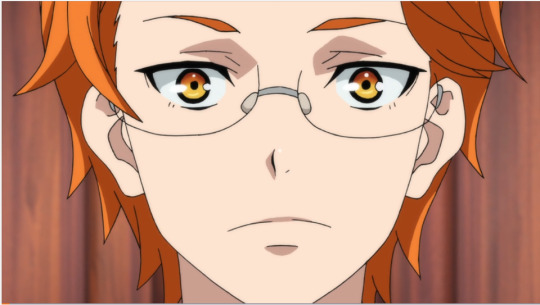
My favorite feature of Kakeru has always been his eyes....
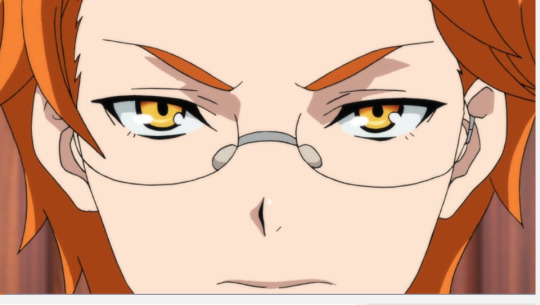
So seeing him go through 8 stages of acceptance in this opening always gives me chills....
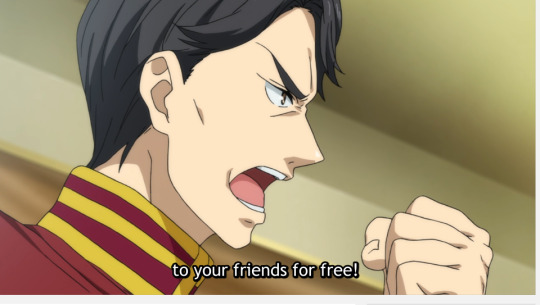
OH MY FUCKING G..............
So in the past I have railed on Crunchyroll for their wonky wording, but this is the first outright mistranslation I think. (Unless “solid style” wasn’t on purpose, but that one was so ridiculous I kinda feel like it may have been....)
If you have seen Pride the Hero, you’ll know Kakeru doesn’t leak the Prism System to his friends. He leaks it to the Itsutomo Group.
To be fair Sadana doesn’t say Itsutomo Group here. Just Itsutomo. But still, what did the translator think the “Itsu” part meant? They leave so many things as-is, but this... THIS they decide to attempt to translate into something.
Okay. OKAY...................................
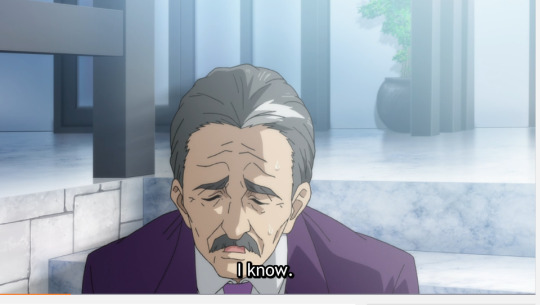
I really, really like Kakeru’s dad. But not for anything he does in the movies/anime. He’s a super boring pushover here. But if you take Young of Prism and layer it on top of all that..... he’s fucking great.
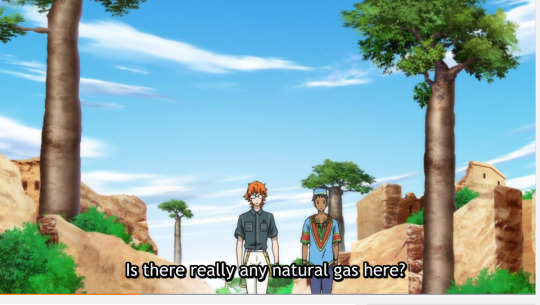
I was so out of it when I first saw this the entire natural gas plot went over my head. I was just like “Episode 5: Kakeru goes to Madagascar. Does a prism show. Then he comes back for some reason. The end?????”
I also missed the earlier reference as well. To think when Kakeru looks at the newspaper in episode 1 and is like “Natural gas is expensive!!” that was foreshadowing ahah.
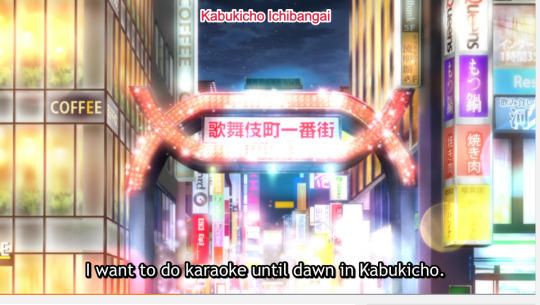
So this is the most controversial part of the episode I think. Globalization/colonization/industrialism has done damage lot of nations which were just fine beforehand, and I think paving over all of Africa’s natural habitats would likely cause.... various problems.
Do I really have any right to be commentating on this? No. But I don’t think King of Prism does either. I just don’t think it’s really the time/place for it.
But all-in-all I suppose Merina’s opinion isn’t too unusual for someone who works for Juuouin Group. I just wish they made it more clearer that his opinion and not the general opinion of Madagascar.
But then again what do I know. I really don’t even want to be talking about this!! It was just such a weird choice to take this episode to Madagascar at all.
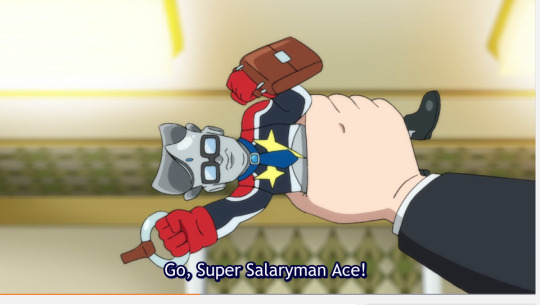
This brought me so much joy. Please go read Young of Prism if you haven’t yet.
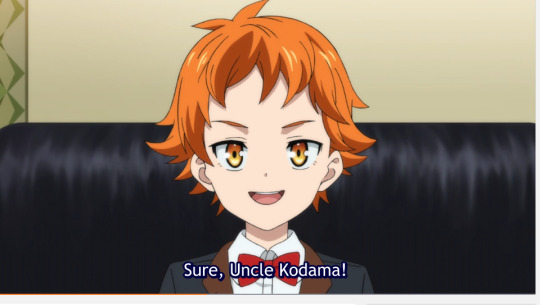
NNghkdhgkdhg baby Kakeru................. face......... uuuUUUgfh and his cute little voice...........
I also often wonder what Kakeru was doing in Kodama’s office in the first place. He’s not actually his uncle I believe.
My headcanon is that his mother dropped him off there one day when she was busy with something and needed someone to watch him quickly, then Kodama-san’s office just gradually became Kakeru’s daycare.
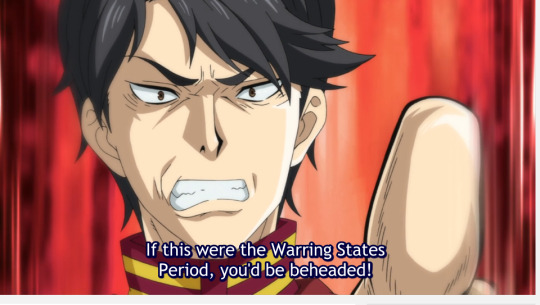
In cheering people will point up one concert light shaking with increasing intensity. Usually orange because nobody knows what other color to use.
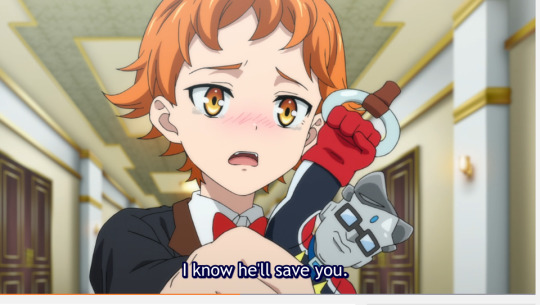
.......GGDGDGDGdksl;fl;sgs.......... AHHHHHHHHHH.....HHH........hhhhhhhhh.. K.....
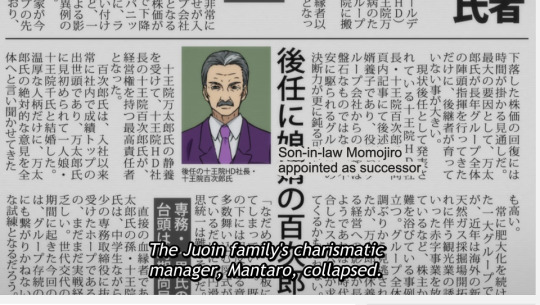
Crunchyroll agrees with me that Kakeru’s father is “Momojiro”. I know that’s the most likely reading, I’m just really bothered and concerned that there is just no furigana for it anywhere.
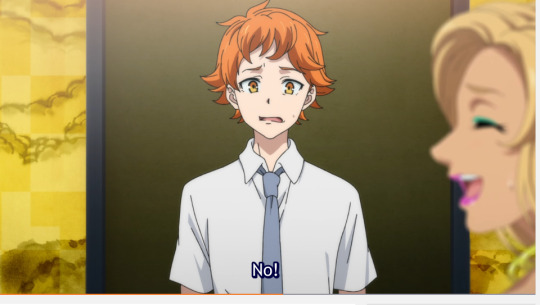
And behold, my favorite Kakeru face of all time.
ahhhhhhhhhhhhhhhhhh poor baby you were so pure back then
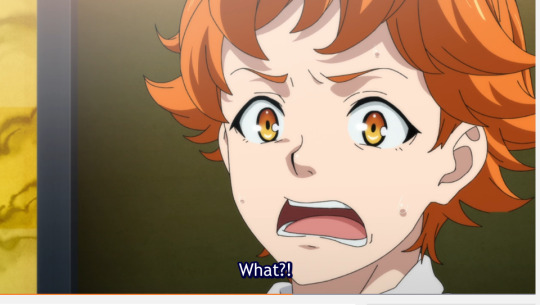
And behold my second favorite Kakeru face of all time aahaha
Okay now is as good a time as ever to bring it up, but.
I’m a bit disappointed that young Kakeru doesn’t wear glasses.
Because most kids get glasses before middle school if they are going to get them, don’t they? It makes me worry Kakeru’s glasses are just an image thing.
I mean he’s certainly frikkin adorable without them, but I dunno.... It made me weirdly happy to learn that Hiro wears contacts in episode 1.
I just want visually impaired comrades in my anime I guess!!!
Or maybe he just went without for longer than he should have by memorizing the eye test by listening to the kid in front of him like I did.
Kakeru can you see I’m worried about you.
Okay I’ll move on......
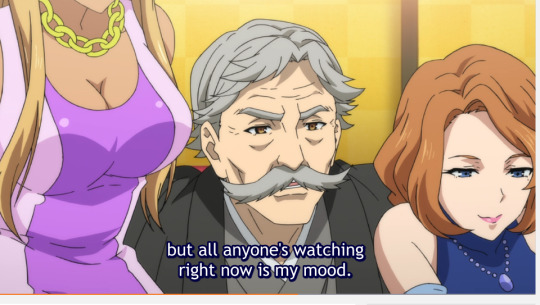
So someone pointed this out in the stream, but he doesn’t really say “mood” here. He says “kao iro” which would translate more into like... health? I don’t know. I honestly have no idea what he was getting at and it’s always puzzled me.

Oh the controversy.....
Okay so, that whole non-issue aside. About the rest of this scene.
I am not particularly offended by it for two reasons.
First...
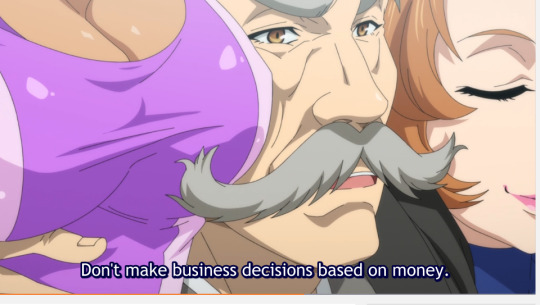
Kakeru’s grandfather is giving him important life advice while his face is IN A BOOB
YOU CANT TAKE THIS SHIT SERIOUSLY COME ON
King of Prism has a tenancy to pair serious moments with ridiculous visuals that nearly ruin them on purpose and it’s a whole other level of humor ahah. There is an even better example of this in the next episode.......
Secondly...
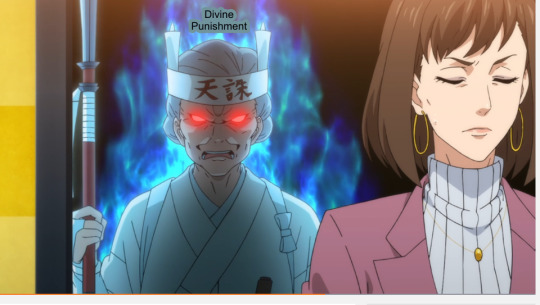
KEI-CHAAAAAAAAAAAAAAAAAAAAAAN
In the theater people hold up two light blue lights as soon as she rises up and then go nuts. It’s the best.
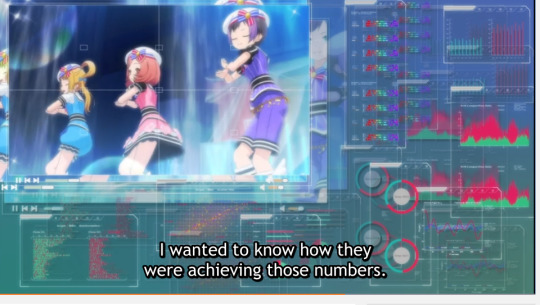
While most of the other characters were inspired by watching male prism stars like Hijiri or Rei, Kakeru watched mostly the girls and I get a kick out of that. We have already known he’s their fan for a while due to his Blowin’ in the Mind ringtone and side materials saying he has their magazines in his room, etc.
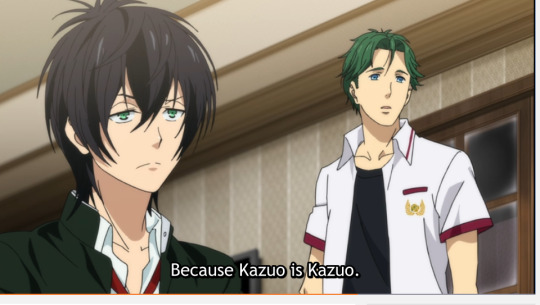
“What” - cheering audience
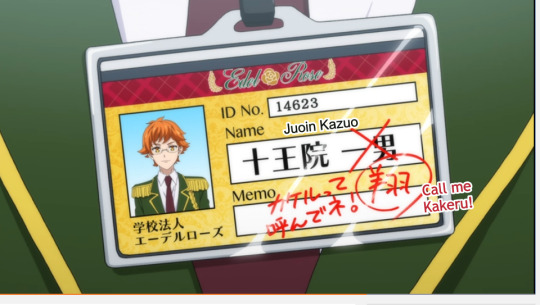
So if you look up “kakeru” in a Japanese-English dictionary, you’ll know it has.... a lot of meanings. And since they always write the boys’ names in katakana (to make it ambiguous I guess) you can never know for sure.
Here we confirmed for the first time it is intended to be 翔 = to fly/soar
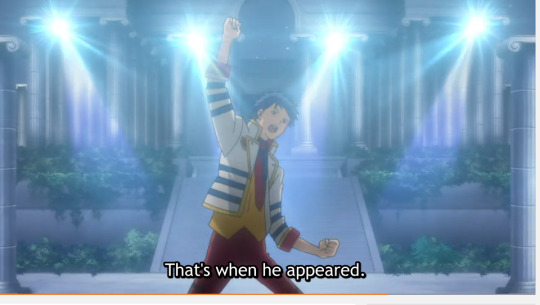
This is a theme throughout SSS. How much Shin changed things for everyone............(I’ll come back to this)............
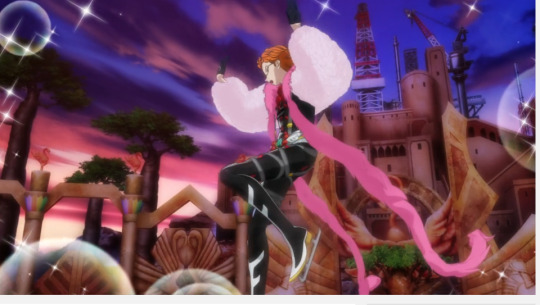
LOVE
So I guess when Kakeru got back from Madagascar Leo was like “So what do you want for your Prism One outfit?” and he was like “Make me a flamingo” and Leo was like “......You got it.”
Or maybe Leo was already like half done with Kakeru’s outfit and then he just burst in the door like “LEO I NEED TO BE A FLAMINGO--”
I only have one bad thing to say about Kakeru’s prism show and it has nothing to do with Kakeru’s prism show. I noticed that his legwork is really similar to Taiga’s, which was when I realized for the first time that it’s the same person doing all the motion capture. So that kind of brought me back to reality a little bit. But oh well. That person is really fucking talented.
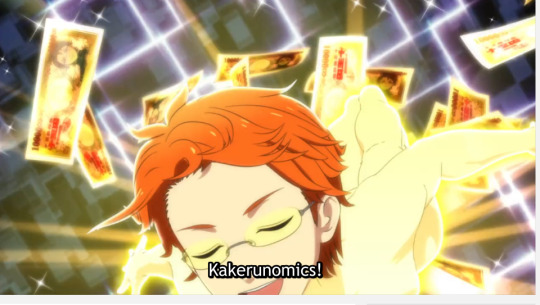
They have been talking about Kakeru doing a prism jump where he’s naked with a pile of money for YEARS. HE DID IT. I’ve seen it in manga, I’ve seen it on Prism Rush... BUT THIS
Also how similar this is to the Prism Rush version amazes me...
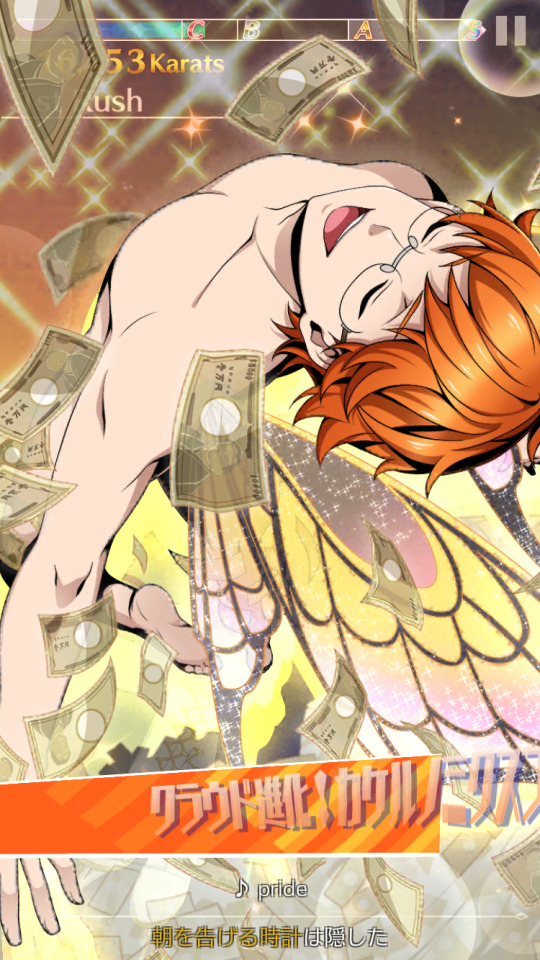
CYALUME CH--
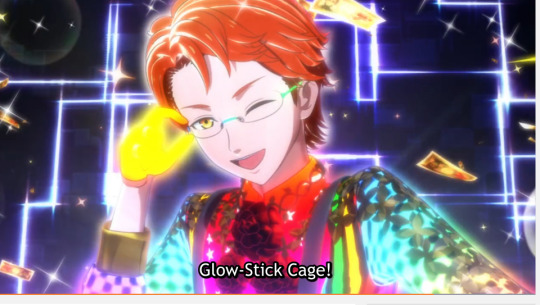
.....So I guess the translators haven’t watched PriPara either huh.
Wait is this even supposed to be for “Cyalume Change” because the subtitle is at such weird timing.
Also I felt bad afterwards about putting “CYALUME CHANGE” as one of my shitty out of context spoilers ahah. I hope I didn’t ruin it for anyone. At least I didn’t say what episode it was. My hope is that anyone who read it has been waiting to be blindsided by CYALUME CHANGE and it came at the best possible moment.
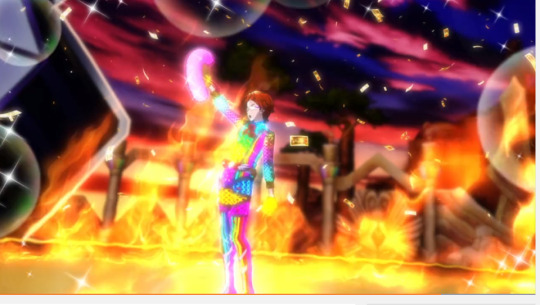
The first couple times I saw this episode I really wondered how cheering would go since so much of this episode is just business mumbo jumbo and if a lot of people would even show up for Part 2 cheering at all.
But then after about a week in I found myself waiting in the lobby before a sold out cheering show and saw a girl whip out a giant pink feathery fan.
Then the girl next to her was like hold my beer and took out a giant (fake) money fan.
Never underestimate Kakeru fangirls is a lesson I have learned over and over and over again.
A lot of people will also have three or four pink concert lights in one hand and an orange one or a color changing one in the other for this part ahah.
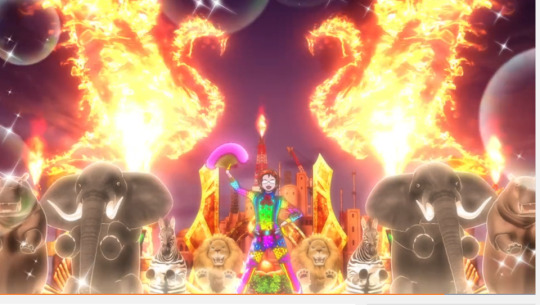
PAINT IT ORANGE PAINT IT ORANGE
(The lyrics to this song are nonsense. But it’s Kakeru, you can’t expect anything less.)
Prism shows with jungle animals are always a good time. (I can’t help but think of Shi Yoon.)
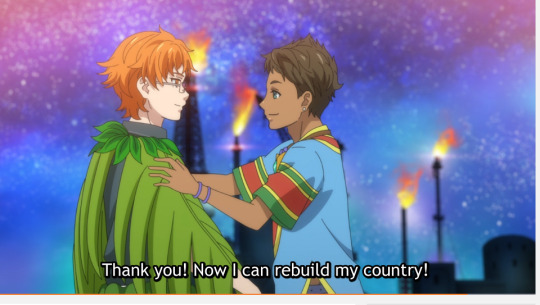
And there you have it, Kakeru saved the entire country of Madagascar.... with his prism show........ let’s not..... let’s not think too hard about this........
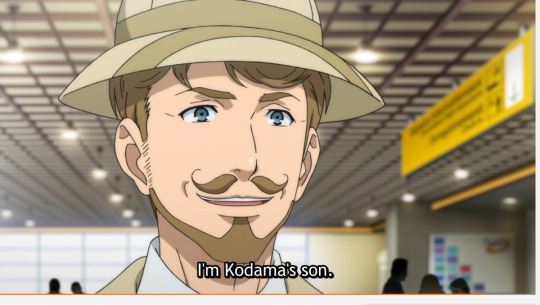
I suppose there are multiple ways this could be true so I shouldn’t be thinking too hard about this either. But.
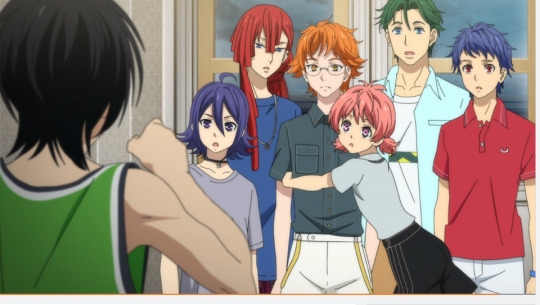
The debut of the Leo pigtails.
Well actually I think he had them earlier in the episode too, but this was the first time I noticed.

Nothing warms my heart more than the few times Taiga throws Kakeru a bone by showing him the tiniest bit of affection. Even if it’s tsundere. Look at him. He’s just so happy. Aw Kakeru. Good for you.
I think this moment was kinda ruined by the new ending music though. In the theater it’s more quiet.
So I have always kinda felt like the Part 2 episodes are a bit weak compared with Part 1 and Part 3, but that’s probably a bit unfair considering how I experienced them. All of them grew on me more with time. It was also kind of hard coming down off of Taiga’s episode. After Taiga’s was so high tension I kinda expected the same for Kakeru too, but they went in a totally different direction. It was nothing like I thought it would be.
Before it aired I wondered if it would be about Kakeru trying to decide if spending his life in the Juuouin Group was right for him or not. And he did question it at one point when he was younger, but unless I misinterpreted it this episode was more about him loosing what he had and trying to get it back? He had doubts in his mind at one time about whether love exists, but he already came to believe it does before the events of this episode. So I guess Kakeru really has no doubt in his mind about what he wants for his future. You know, I think I like that better. I worry about him burning out with all the stuff he does, but it really does seem to be his true calling.
I find it rather sad that the Edel Rose boys never found out Kakeru’s backstory though. Instead he shares it with Merina. He couldn’t even tell them he was leaving. But then again, Minato quickly interpreted that it was probably too difficult for him, I’m sure he was right. The other boys seemed to understand and support him regardless. Kakeruuuuuuuuu...............
In side materials it’s kinda of hinted at here and there that Kakeru really wants to be more like Minato. He wants to be someone strong who supports everyone. He also really seems to not want to show any weakness to anyone, especially his friends....? (As I’m typing this I’m thinking back to the White Day event on Prism Rush when he was trying so hard to organize everything while also trying his hardest to hide that he was falling apart......) I guess he picked this up in the business world as well. Because of this I still feel there is a lot to Kakeru we still don’t know.
Well. Since I remembered this time and I liked this one: The special video for this episode that they show in the theaters has a voice over describing Kakeru’s intense schedule on a normal day.
But apparently on weekends he does no work at all. He gets caught up on manga and then plays with his friends. They showed a lot of stills of him hanging out with the Edel Rose boys, but my favorite and the one I remember the most was him playing arcade games with Shin (on a mysteriously PriPara-looking cabinet.... I think it was a fighting game though?)
Also Kakeru has a secret trunk in his room which must never be opened.
30 notes
·
View notes
Text
Heather Hart, Readings, Videos, and 20x20.
Heather Hart, an African American artist born May 3, 1975 dove right into her lecture by sharing pictures of her artworks. She was born and raised in Seattle. Hart is highly educated as could be seen from her achieving a BFA from Cornish College of Arts, attending the Center for African American Studies at Princeton University, and obtaining a MFA from Rutgers University.
Heather Hart reminds me of Taiye Selasi, the woman who was on the TED talk video: “Don’t ask me where I am from, ask me where I am local”. Her quote in the talk really resonated with me “How can a human being come from a concept? It's a question that had been bothering me” because I too am not just from one place. Born and raised in Los Angeles, I ended moving to Hong Kong where I went to a British International School there. So I have been a part of many places, been accustomed to many different cultures, traditions, language and people. I’m just like Heather Hart and Taiye Selasi, no matter where we are “from”, we are not bounded by it, we are more than it. Taiye Selasi went on more to explaining how it doesn’t seem right to say that she’s from the United States when she’s only had a relationship with Brookline, New York City and Lawrenceville, and not every single state and city in the US. I can agree completely with her. It does seem ridiculous now to say you’re from a place where you haven’t even the least lived or explored or been familiar to most of things accustomed to the United States. Whenever I address where I seem to come from, people would just automatically answer the question for me with their opinion: It doesn’t matter where you were born, it doesn’t matter where you have lived or stayed the longer, you’re family is Chinese so you’re automatically Chinese. I find this rude, because it seems people base their labels off appearances. I may look Chinese and know how to speak the language, but I do not know most of the things to being a Chinese. I don’t know how to read or write Chinese, nor do I know the area. If I was placed in China right now, I would be completely lost. I don’t follow most of their traditional cultures as well, the only holiday I celebrate is Chinese New Year with my family. How is it safe to say that I am truly only Chinese when I am more than just one label? This is based on Selasi’s three step test called the Three R’s: Rituals, Relationships, and Restrictions. The Rituals I share would be like I said holidays and festivities that I care about such as Chinese New Year, which pronounces my Chinese, and western holidays like Christmas, Thanksgiving and Halloween which signifies my western side. My relationships are with my parents who are Chinese, my American childhood friends, my high school British and Hong Kong friends and my current international and American college friends. Like Selasi mentioned the 3 R’s have proved that I am not just a part of one label, I am everything that I have been accustomed to.
Many factors played an influence on Hart’s artistic practice and career. A big factor would be her family. Her dad was a carpenter and starting from a young age, he taught her carpentry. This allowed her to have taken on an interest in sculpture influenced by his father. She also researched her family tree which brought her to to discover this essay written for her great great great great grandfather (4 generations before her) by a student where he mentions the tribes from Africa that he has found and she discovers many other histories about it. Her favorite movies and movie actors who were negro played a big part in influencing her artworks e.g. her sculpture piece of “The New Numinous Negro” was based upon it.
Her artistic practice consists of many traditional mediums such as watercolor, collage, printmaking, and drawings. But what makes her unique is that she likes to combine these mediums together than use them individually. She goes back and forth with these mediums, she is always constantly exploring with them. She describes herself as a research based person instead of being into experimenting with materials and thinking about formal reasons in her art.
One of her pieces that resonated with the most is The Black Lunch Table. Heather Hart is the co founder of this collaborative masterpiece. The aim of this piece is to take literal or metaphorical lunch tables filled by the artistic community or the larger community of neighbors and visitors and transform them into a discursive site, the perfect space to be able to discuss critical issues to clarify and support shared concerns. In my opinion, I think this is a genius masterpiece because it is such a clever way to have people who identify as an African American to be able to join in on conversations and feel as if they’re a community. Last week’s readings especially the video: “The Problem with Wokeness” and the New York Times article: “I’m a Black Feminist. I think Call-Out Culture is Toxic.” has a connection to this piece. Both the video and the article strives for a community where we finally understand each other instead of turning our backs from each other and continue to be separated by our differences and labels. The Lunch allows us ignore them and be able to come together by our similarities and finally be able to look past our labels.
Her art practice relates to the core issues addressed in the talk, because it is the core issues she has that influenced her art practice. Her work explores changed symbols and traditions, the nostalgic future. She wants her works to be able to engage with the audience by activating and programing the public. A major issue she has is depicting the personal reclamation.
Throughout the presentation, I felt quite lost. Hart would not have a clear method of explaining her artworks, its process and meaning. She would constantly jump from one thing to the next without elaborating into it properly. Sometimes during the lecture she would be explaining something and she would even lose herself during the process. Where she would end whatever she was trying to say by repeating “I don’t know” because she had confused herself as well. This has me questioning her intentions in her artworks. She doesn’t seem to know what she is really doing sometimes. For an artist to be able to create their artworks based on a theme, they would have to know the theme well because it is their motivator.
In terms of the bigger picture, although I had a criticism about Hart, but I do admire her artworks and the meanings behind it, at least the ones she has managed to explain in deeper detail. She bases her artworks on her identity as a black woman. She tries to
Several readings and videos that has interested me the most for this week is Taiye Selasi TED TALK “Don’t ask me where I am from, ask me where I am local” (which I have already mentioned earlier on), Setting The Historical Stage passage, and the BBC Ideas Video: “Gender identity: 'What quantum physics taught me about my queer identity’”.
“The great force of history comes from the fact that we carry it within us, are unconsciously controlled by it in many ways, and history is literally present in all that we do.”- James Baldwin. This is a quote taken from Setting The Historical Stage passage which made me think of how much of an affect our histories have on our present and potentially our futures. In the passage, when the Spanish conquistador Balboa discovered Panama, he also discovered very open sexual and queer behaviors from the Indigenous people of Quaraca. He was disgusted by these actions that he ordered brutal punishments then deaths to them. This past has reflected on our present and future in many ways. Although many people are striving for the acceptance of the LGBTQ community, there are also many people who continue to share the disgust and hatred towards it like Balboa. Furthermore, many places like the United States still conduct punishment and policing for these actions. The author of this passage even quotes the US as a “the current criminal legal system.” In my opinion, the people who still do not accept specific groups of people like the LGBTQ community is mostly because they still share these old traditional views that were brought upon them because of our history. If people with enormous power like Balboa was accepting then, we wouldn’t have this problem now.
This also reminds me of the BBC Ideas Video: “Gender identity: 'What quantum physics taught me about my queer identity’. Amrou Al-Kadhi the narrator of the video gave an interesting perspective on how we should view gender identity, which is quantum physics. He explains: “Quantum physics reveals that there is no fixed reality and it’s full of beautiful contradictions” Al-Kadhi explains this by using a sub-atomic particle which can be in many places at the same time and multiple versions of the same event can be able to occur all at the same time. This reminds me of Heather Hart, Taiye Selasi and my shared issue. We are like these sub-atomic particles which has acted as a metaphor for where we belong. We don’t belong in one label, we can be more than one at the same time, just like the particles.
A 20x20 presentation that has interested me the most, was the one on Cian Dayrit. Dayrit, an artist born in Manila, Philippines in 1989 who is currently based in Brazil, is an intermedia artist working with sculpture, painting, and installation and considers himself as a researcher. His working themes are about origins, history, heritage, nationalism, nation-building, and critical problems in the Philippines. Just like Heather Hart, he creates his artworks also based on his identity. He also looks into a character and their political life and material legacy, which is the things in history that passed on. He also takes interest in how one navigates his or her life through suppose guilt and entitlement but also reluctance of control. During his time in London, he hunted for colonial images that represent power, he used these images as a tool to critique a rather privileged perspective that challenges the traditional concept of mapping since he believes it is a very politically manipulated creation. His love for mapping has grown that he even gave out workshops on mapping. His workshops with the underrepresented population guides them to create individual maps to establish a self identity that they have control over rather than the political powers. A word he believes revolves around mapping a lot is hegemony: leadership by one country over another. One of his artworks that I am quite fond of is the Monuments of Great Divide. The work is done in collaboration with the artist Felman Bagalso. It is a multimedia work of wood sculpture with acrylic and digital print on paper. He creates these wood sculptures of walls that feature chicken wires and spikes that show the dangers of crawling over. How I have interpreted this piece is that these walls suggest the different levels of restrictions at different borders and the difficulty of passing through them. The drawings feature the boundary divisions that are artificial which were come up by political powers. I believe it is criticizing how the way the territory are divided may not be fair or even artificial.
0 notes